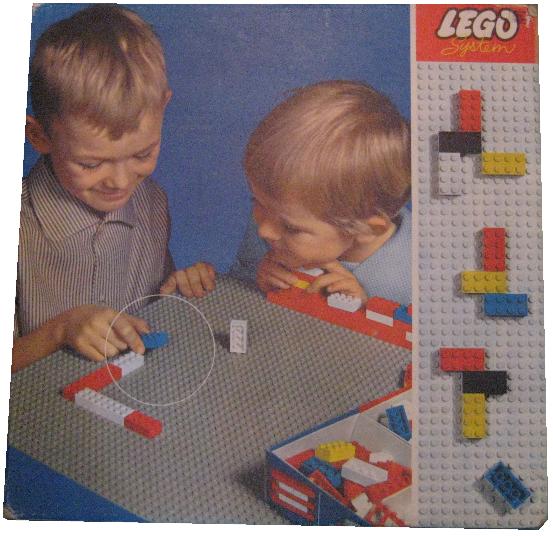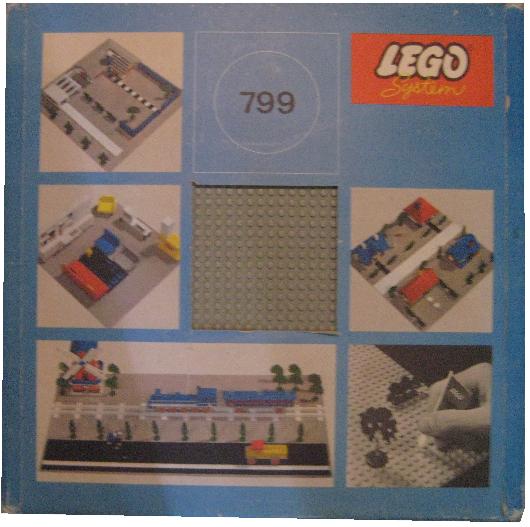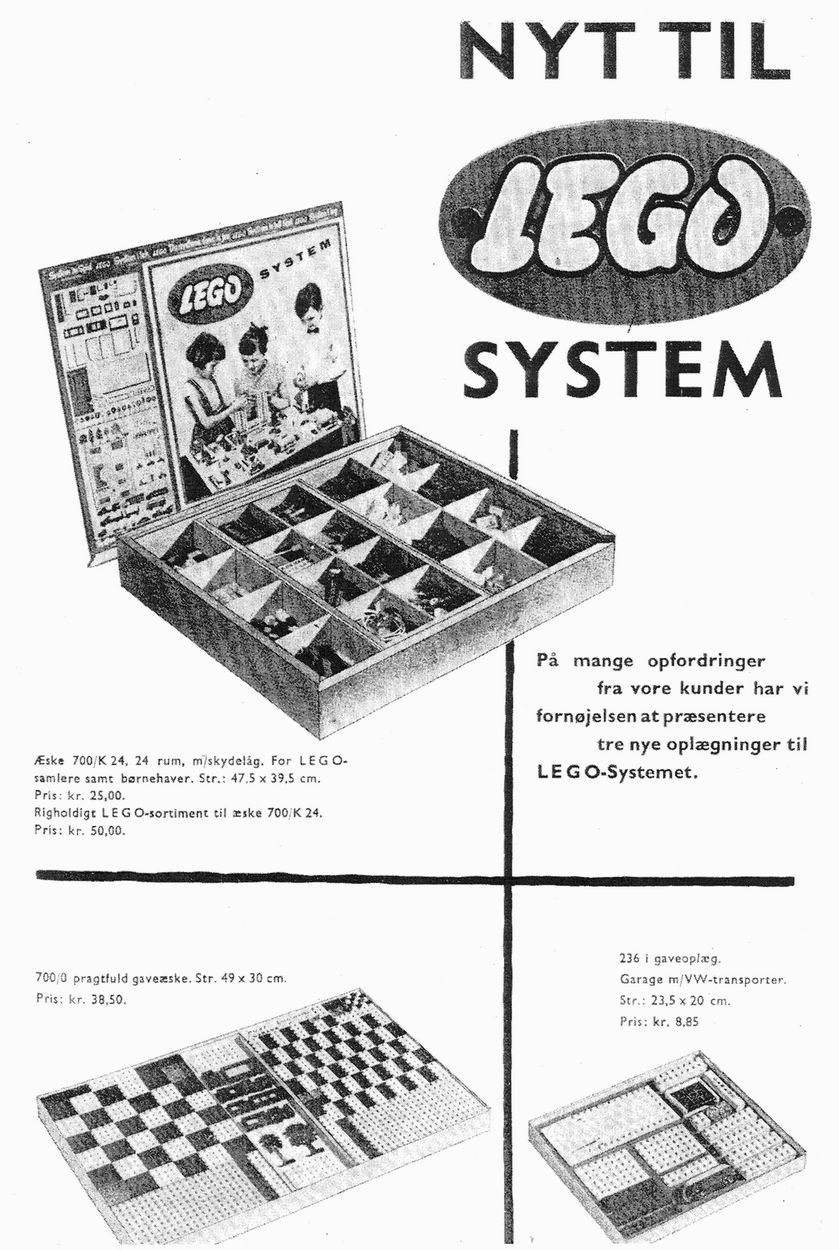
LEGO System.
The System of Play was selling well in several European markets, but it was still limited by the basic design of the brick. German retailers, in particular, were critical of the design and complained about the quality. So Godtfred began to redesign the basic brick that Ole had copied from Hilary Fisher Page a decade earlier.
The specific details or the inspiration behind the new design are now lost to the mists of time, but by late 1957 Godtfred had created several different prototype designs that interlocked much better than the Mursten brick.
These new designs were tested with children in Copenhagen and it turned out that the brick with round hollow tubes on the underside was their favorite. In this design the studs on top of one brick could fit between the hollow center tube and side walls underneath another brick and stay connected by friction. The tight tolerances in molding allowed the stud and tube coupling to stay attached in virtually any arrangement but still easily disassemble; a property Lego has named “clutch power.”
This new design would become the modern, or as Godtfred called it, the “real” Lego brick. It was the beginning of Lego as we know it today. (1) (1) Some of the other brick designs are included in the original patent specification and show up later; e.g. the Italian Minitalia bricks.
It would be difficult to overestimate how important this seemingly simple stud and tube coupling would become. Bricks could now be assembled in virtually any arrangement and this versatility allowed Lego to create an entire system that was much more complicated than that of the original System of Play..
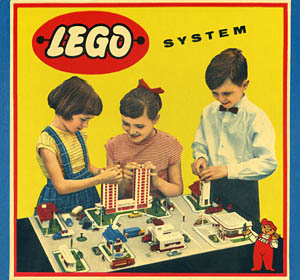
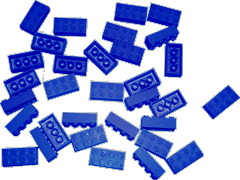
In 1974 Jorgen Kirk Christiansen (Kjeld's cousin, who appeared on the original System i leg boxes) calculated that six 2 × 4 bricks could be combined no less than 102,981,500 different ways. (2) (2) Jorgen made this calculation assuming only combinations that were possible when you stacked 2 × 4 bricks singly on top of each other. In 2005 the Danish mathematician Søren Eilers calculated a larger number, 915,103,765, considering any combination of the 6 bricks.
The patent
This new stud and tube coupling would prove to
be the most critical innovation in the history of the company. Godtfred,
realizing the value of the new design and perhaps mindful of the Kiddicraft
brick a decade earlier, immediately set out to protect the new design. Along
with the in-house lawyer, Ole Neilson, Godtfred presented the application to
Danish Patent and Trademark Office in Copenhagen at exactly 1:58 p.m. on 28 Jan
1958.
He later applied for patents in most countries where the brick was sold. The new
design would ultimately be patented in 33 countries.
Would ultimately be patented in 33 countries.
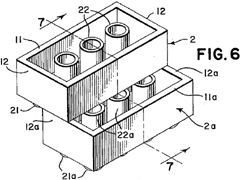
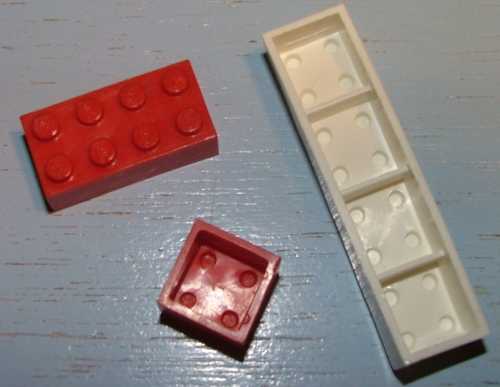
The Original Bricks
The hollow bottom 2 × 2, 2 × 3, 2 × 4, 2 × 8, 2 × 10 and 4 × 4 corner brick molds were immediately retired and were replaced by new versions with the tubes, but the 1 × 1, 1 × 2, 1 × 6 and 1 × 8 bricks, which were less dependant on the new design were not changed until the old molds wore out, a process that took several more years.
Godtfred also designed a sloped roof brick; a design that was only possible with the new stud-and-tube coupling. In 1958 the first four 45° sloped roof bricks; the 2 × 2 slope, 2 × 4 slope, 2 × 2 peak and 2 × 4 peak were introduced. In 1960 an additional nine styles were released and an entire system for constructing gabled roofs became available. Along with the window/door system it was finally possible to build realistic houses and other buildings. It was the first complete example of how tightly integrated the new system would become.
Over the years there would be many small changes to the design of the brick, some cosmetic, such as the typeface on the studs, some due to new molding requirements, and others to allow better “clutch power.” But the original 1958 brick is still fully compatible with a brick manufactured today.
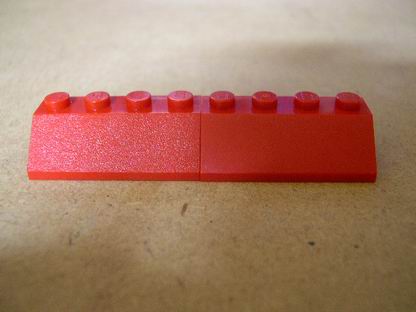
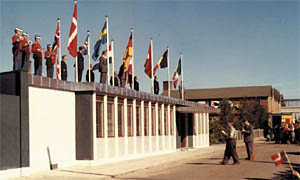
System Hus
Lego continued to expand their operations and by 1958 there were 140 employees in Billund. Increasing sales resulted in a new international administration building, System Hus (the System House), as well as the installation of the company’s first telex and photocopier. In 1959 there was yet another major expansion of the Billund plant.
De system sets
Lego immediately began to promote the new brick design. However there were very few new sets in 1958. In most cases, such as with the 700/x or 300 series sets, the new System elements simply replaced the previous Mursten elements.
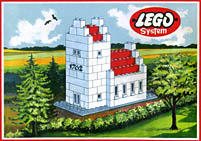
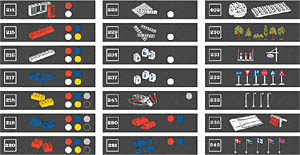
The Supplementary Sets
Lego had sold small add-on sets since 1954, and this became more significant when System of Play was introduced in 1955, but it wasn’t until 1956, when Lego began German sales, that they seriously began to market the supplementary sets (or “parts packs”).
These new sets consisted of from just one of two specialized pieces up to 50 small bricks and were designed to be easily collectible, inexpensive impulse purchases. And this strategy worked: early sales, particularly in Germany, went well and soon the sets became a basic component of Lego’s retail assortment. No less than half of a typical early 1960’s catalog was devoted to them. They were sold, in one form or another, in every market.
By the middle of the 1960’s, at their peak, 59 different supplementary sets were available in Europe. As their foreign markets expanded, however, the marketing and distribution of many small sets became problematic and they were gradually phased out in favor of larger sets. By the early 1970’s they were mostly replaced by “Service” sets, which were typically much smaller and available only by mail-order. These Service sets, in one form or another, continue to be sold to the present day.
